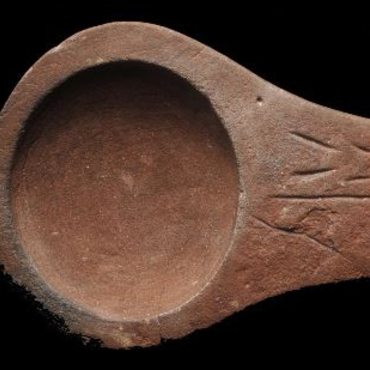
- Home
- Parietal art
- Lighting
In the late 19th century, many were opposed to the recognition of Palaeolithic parietal art, and one argument that was raised involved lighting. For some, it was highly unlikely that humans could have created paintings or engravings in the far corners of caves, far from a source of natural light. It was thought that humans at the time were not capable of making an instrument that was both portable and able to give off enough light to work under the conditions imposed by the setting.
Nevertheless, four years after the discovery of the parietal figures in the La Mouthe cave (Dordogne) and their acceptance by Emile Rivière (1895), Rivière discovered an object made of sandstone and decorated with an engraving of an ibex. On the other side was a carved circular depression, the bottom of which was covered in a sooty deposit. Analysis revealed the presence of animal fat-based combustibles. This was the first lamp to be recognised as such.
In certain caves, although not at Lascaux, traces of smuts found on the walls have led researchers to think that resinous torches were also used, which would have better adapted to moving about within the cave than lamps.
Finally, hearths, devoid of any sort of object made of flint or bone, were set up solely for the purpose of providing light.
Excavations led by André Glory at the base of the Shaft Scene led to the discovery of a lamp in red sandstone, completely crafted and polished, fitted with a handle and adorned with engraving. Over a hundred lamps were found in Lascaux, not all of which are quite so elaborate. Most are limestone plates whose slightly hollow central portion was used to hold the fuel.

